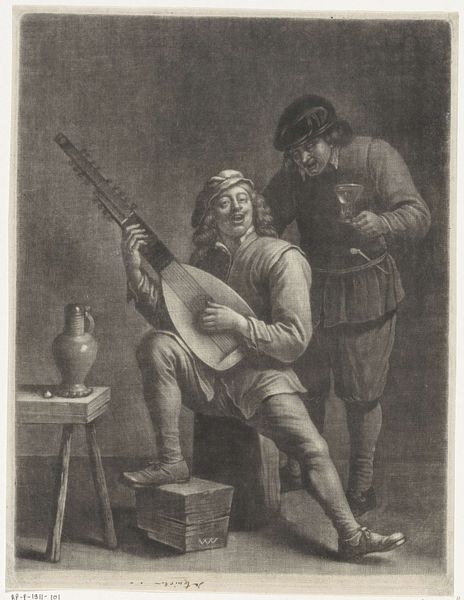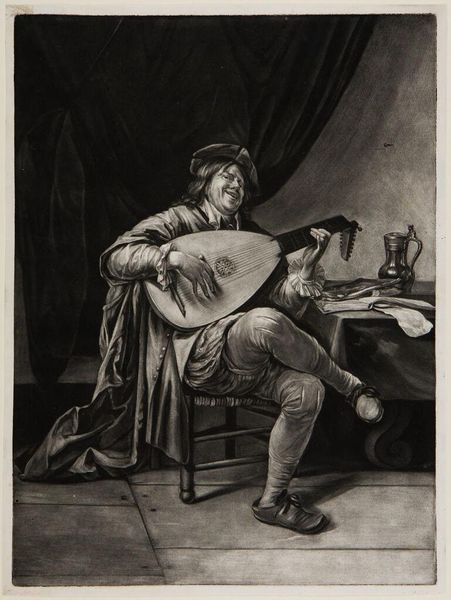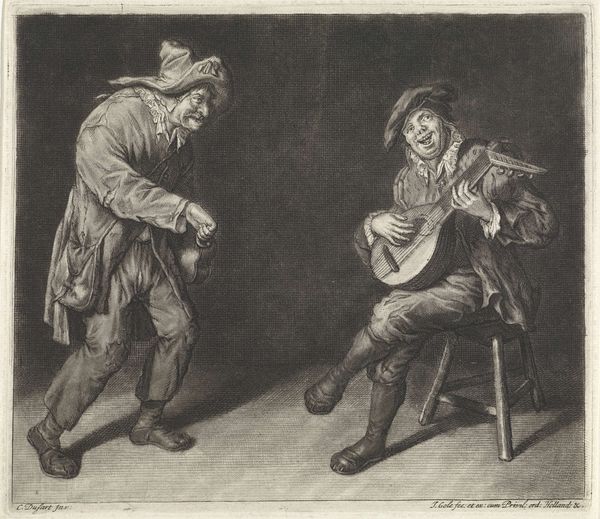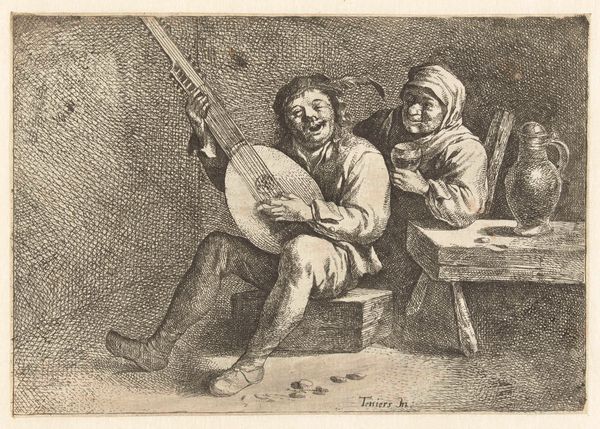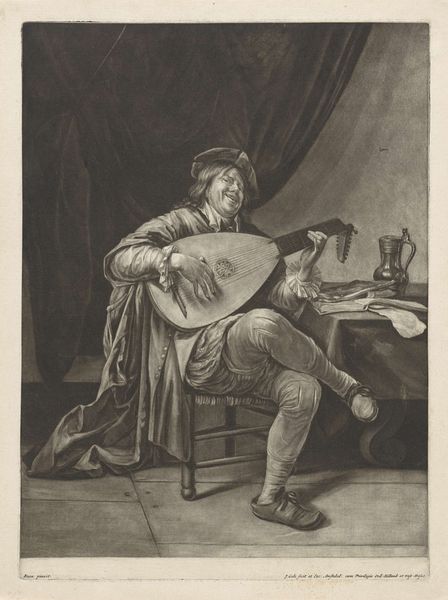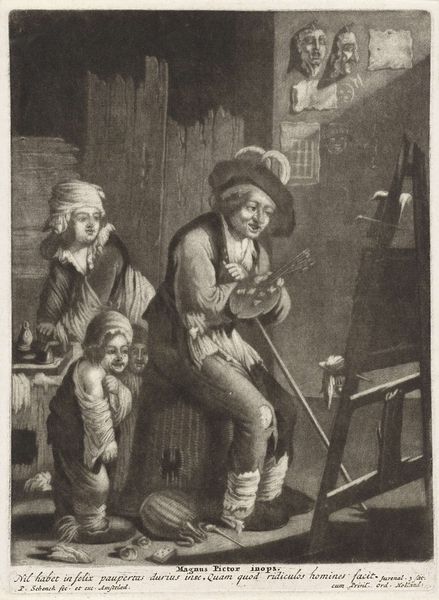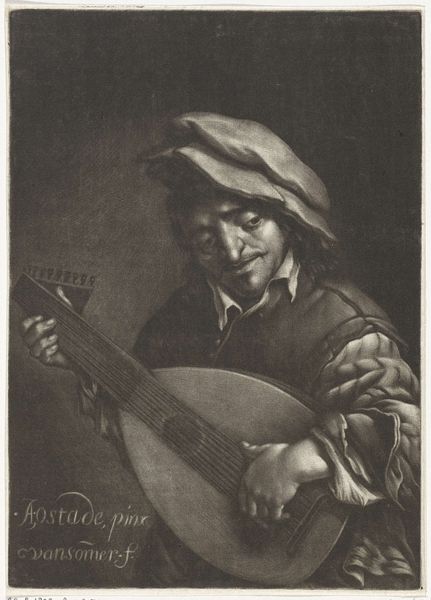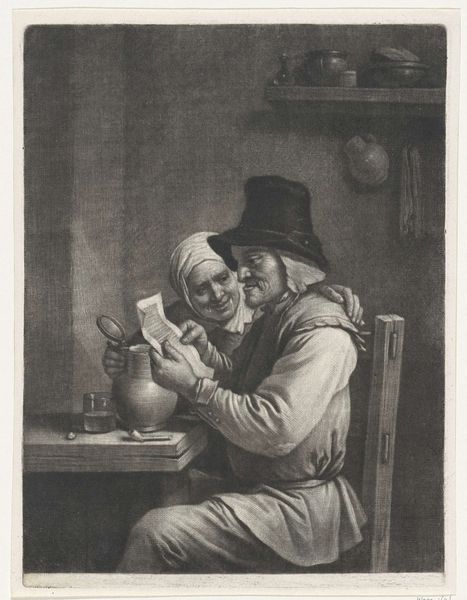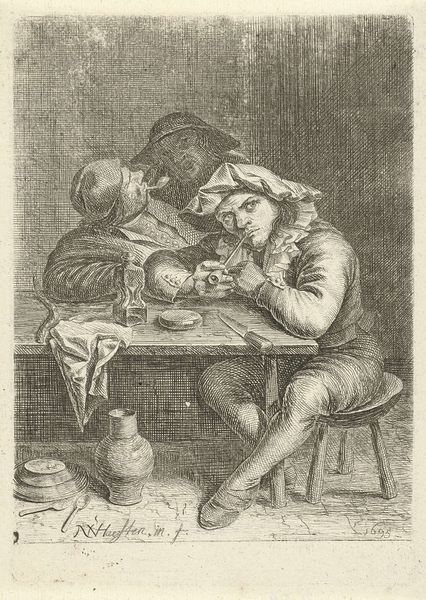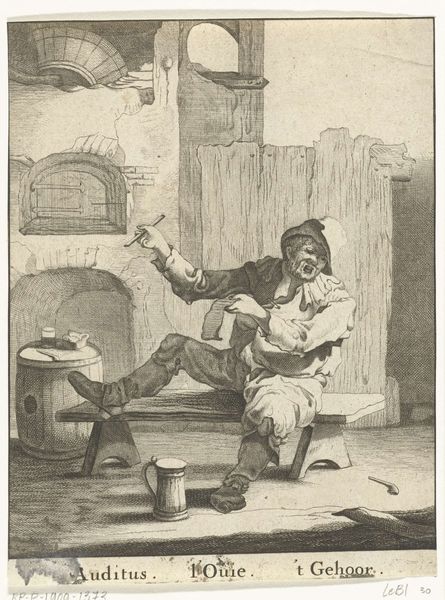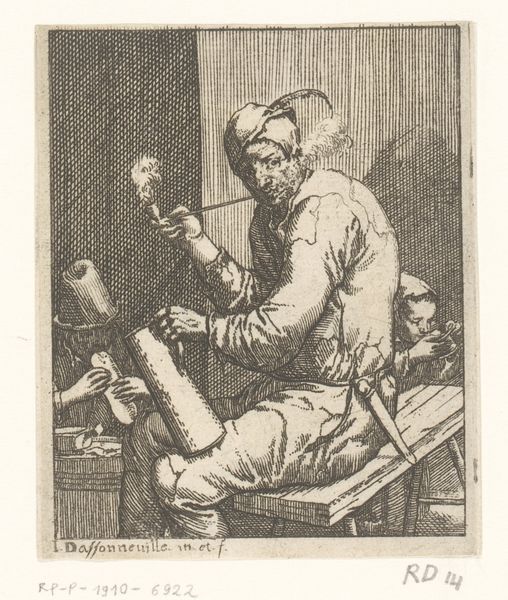
#
wedding photograph
#
photo restoration
#
charcoal drawing
#
archive photography
#
historical photography
#
portrait reference
#
unrealistic statue
#
old-timey
#
limited contrast and shading
#
19th century
Dimensions: height 294 mm, width 215 mm
Copyright: Rijks Museum: Open Domain
Jan van der Bruggen created this etching, “Zingende luitspeler”, sometime between 1669 and 1709, using etching techniques that were quite innovative for the time. The etching process involves covering a metal plate with a waxy, acid-resistant coating. The artist then scratches an image into the coating, exposing the metal. When the plate is submerged in acid, the exposed lines are eaten away, creating grooves that will hold ink. The plate is then inked, wiped clean, and pressed onto paper, transferring the image. Here, we see how van der Bruggen employed these materials and processes to create an image of remarkable detail, from the texture of the lute’s wood to the glimmer in the eye of the cat looking through the window. In the 17th-century Dutch Republic, etchings were not just artworks; they were commodities, bought and sold in a thriving market. This print is a reminder that art exists within a network of labor, materials, and exchange. It challenges the hierarchy of art and craft, showing how skill and creativity intertwine with the economics of art production.
Comments
No comments
Be the first to comment and join the conversation on the ultimate creative platform.
